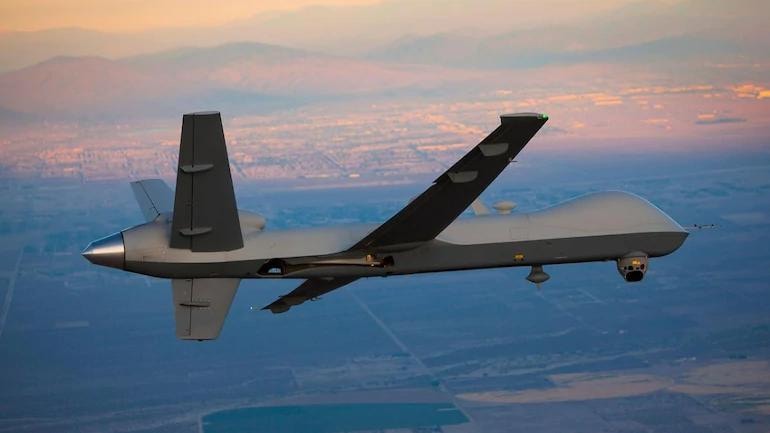A $3 billion deal for the purchase of 30
armed drones manufactured by US company General Atomics is likely soon.
If the deal goes through the army, navy and air force will get 10 such
combat drones each.

Drones are changing the face of modern warfare. Aerial attacks using drones loaded with missiles and laser-guided bombs capable of destroying targets deep inside enemy territory could soon be a reality for the Indian military looking to boost its unmanned warfare tactics.
A $3 billion deal for the purchase of 30 armed drones manufactured by US company General Atomics is likely soon. If the deal goes through the army, navy and air force will get 10 such combat drones each.
Surveillance, reconnaissance for intelligence gathering and even carrying out combat missions behind enemy lines, without risking pilots or soldiers on the ground in tough mountainous terrains, would be the key objectives of these unmanned aerial vehicles. So far, the Indian military has been using drones, which include Heron Surveillance drones and the Harop loitering munition, for surveillance purposes only.
The MQ-9 Reaper, also called Predator drone, can detect targets using its inbuilt sensors and radars. It has an endurance of more than 27 hours and carries payloads up to nearly 1,700 kg with a range of 6,000 nautical miles and a flying capacity of up to 50,000 feet. It can carry deadly hell fire missiles and laser-guided bombs, making it a potent weapon.
The Predator B armed drones have been used by the US forces in Iraq, Afghanistan, and Syria.
These high altitude long endurance (HALE) drones would be critical for the Indian military for operations in higher reaches of Kashmir, Ladakh, Arunachal Pradesh, and Sikkim in wake of the growing threats from China and Pakistan.
China is a big player when it comes to drones and unmanned aerial vehicles (UAVs), but Pakistan is also looking at using armed drones with Beijing's help. China has invested a lot of effort in developing civilian drones and the same has been translated into them developing combat drones. China is also one of the leading countries when it comes to R&D concerning drone technology.
Officials said the features of these drones can vary based on the requirements of the navy, air force, and army.
While the plan is to have 30 of these drones—10 each for the army, navy, and air force, the orders can be split and purchases made in batches to have some of these available to the forces at the earliest.
Discussions in the security establishment on the purchase of these drones have taken place ahead of the visit of US Defense Secretary Lloyd Austin next week.
Defence deals worth $18 billion were signed with the US in 2007.
Indigenous options being explored
Unmanned
vehicles are considered the future of warfare, and India is also
exploring indigenous options. It is important to note that drones have
helped win numerous wars in recent times; the latest being the
Azerbaijan-Armenia conflict where they proved immensely effective
against armour and artillery.
Indian Army chief Gen MM Naravane while speaking at a webinar recently also asserted how the use of disruptive technologies like drones is the future of warfare. Underlining the use of drones by Azerbaijan recently in Idlib and Armenia, he said the offensive technology has challenged the traditional prima donnas: the tanks, artillery, and the dug-in infantry.
Private Indian companies and public sector units are working on such platforms that will be the key in military combat in years to come. Hindustan Aeronautics Limited (HAL) unveiled a blueprint of their plans recently to bring in such platforms during the ongoing Aero India show in Bengaluru.
Modeled on US project Skyborg, HAL has started work on an ambitious project that will allow teaming up of unmanned aircraft and vehicles with manned jets.
Combined Air Teaming System or CATS will have a mother vehicle -- a fighter jet operating 700km away and strike enemy targets through unmanned warriors. The fighter jets guiding the unmanned drones can remain 150km behind and control and give directions to four unmanned vehicles called the CATS Warriors.
The drones are expected to be integrated on Tejas and Jaguar fighter jets. The first prototypes are expected to fly in the next three to four years. Capable of evading radar detection, its stealth capacities will make it even more potent.







0 comments:
Post a Comment